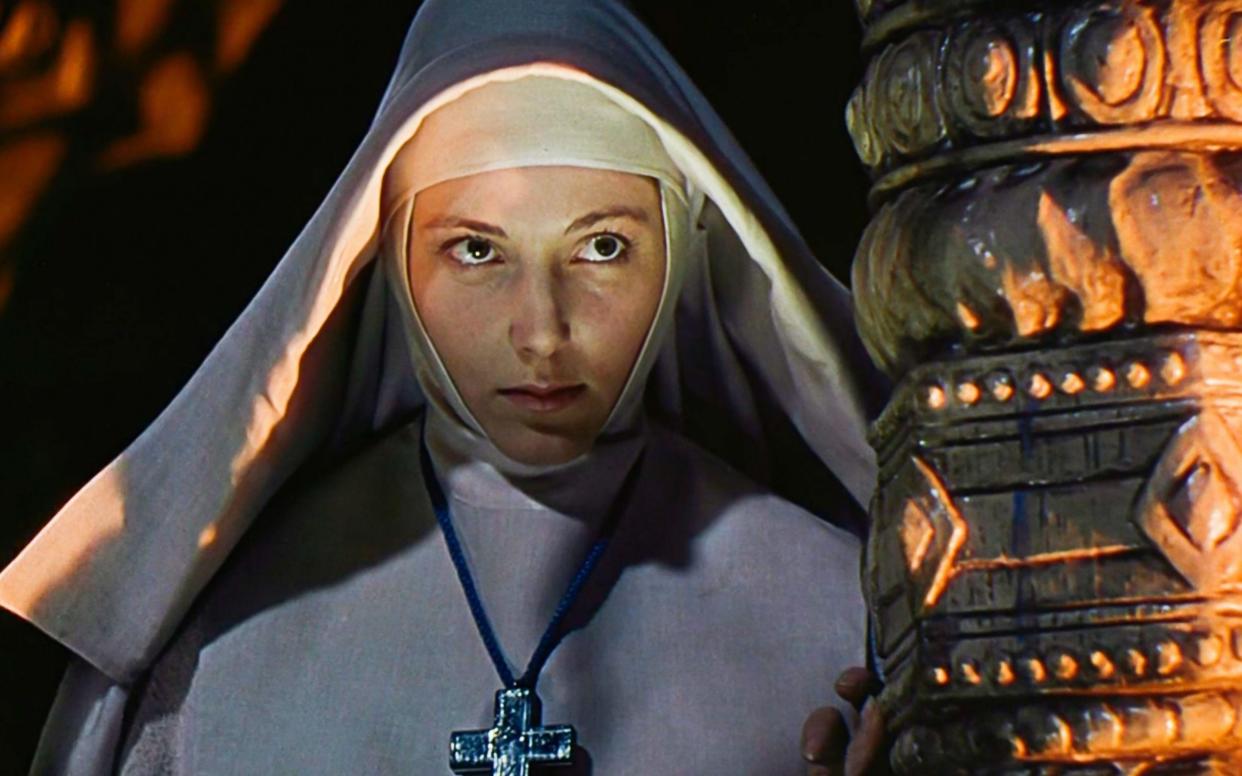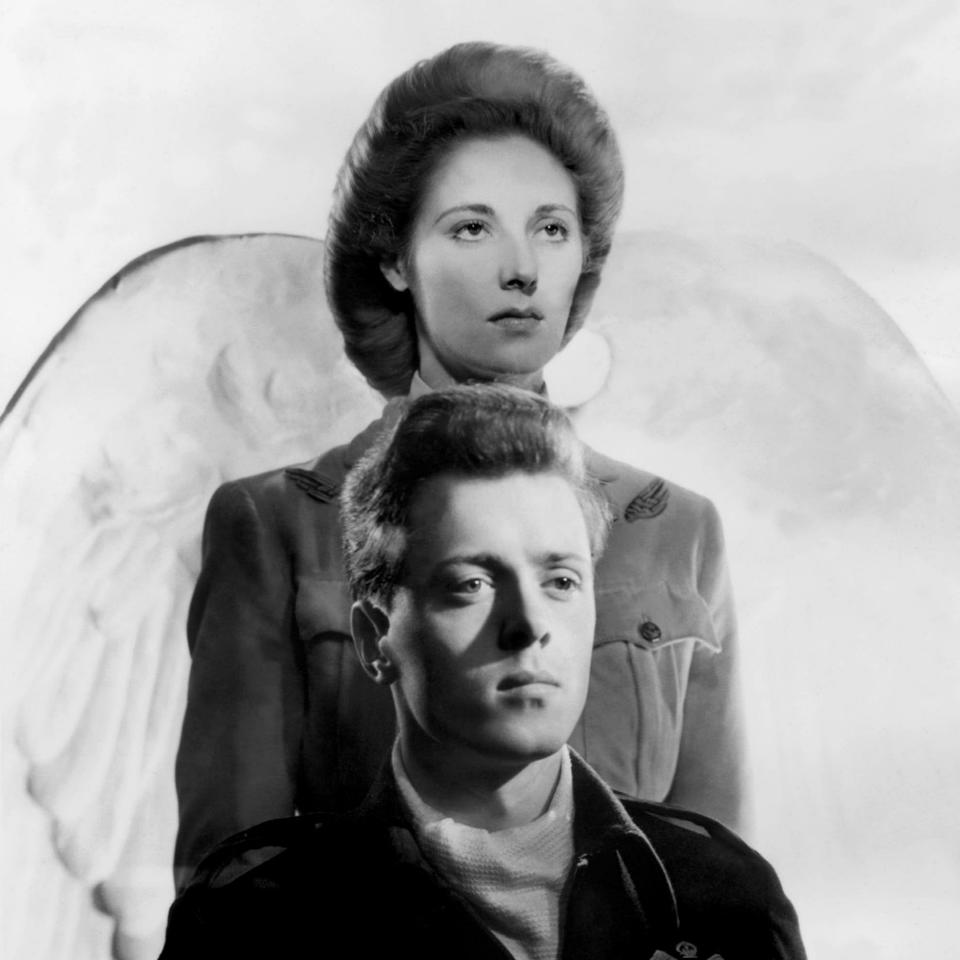The fall of Sister Ruth: why Black Narcissus ruined Kathleen Byron

In a monastery halfway up the Himalayas, in the summer of 1946, a young Englishwoman pulled a gun on her married lover.
“It was a revolver, a big one, US army issue, and it was loaded,” Black Narcissus director Michael Powell would later write of his snow-capped showdown with paramour Kathleen Byron. “A naked woman and a loaded gun are persuasive objects, and I have always thought that I deserved congratulations for talking myself out of that one.”
The story may not be quite as scandalous as it initially sounds. Firstly, while Black Narcissus was set in craggier reaches of British India, it was actually filmed at Pinewood Studios, and at the West Sussex address of an Indian army retiree (whose garden contained geographically appropriate flora). And it is unclear whether the firearm was aimed at Powell during the shoot or afterwards.
Moreover, according to Byron, the entire incident was dreamed up by the director. “Michael wouldn't have been such a great director if he hadn't had an imagination,” she commented.
Byron was a largely obscure figure when she passed away in 2009 at age 88. If she was remembered, it was for Black Narcissus – in which she created a holy show as a demented and sex-crazed nun – and for portraying the pension-age wife of Matt Damon’s character at the end of Saving Private Ryan.

However, with the BBC’s Gemma Arterton adaptation of Black Narcissus proving a surprise Christmas hit – apparently crazed nuns are the perfect way in which to bring down the curtain on 2020 – perhaps she will at least receive the recognition that is her due.
Byron is certainly one of the most compelling things about the original Black Narcissus, in which, portraying Sister Ruth opposite Deborah Kerr’s Sister Clodagh, she bulged her eyes and flared her nostrils in thrilling, chilling fashion (Aisling Franciosi inherits her wimple in the remake).
Powell had already conducted an affair with Deborah Kerr by the time they got around to Black Narcissus. They’d met seven years earlier making Contraband, when he remembered her as “an adorable little cigarette girl, all lovely liquid eyes and nice long legs.”

They had since moved on – and now his attention was on Byron, who was married. They were soon sleeping together, though this didn’t prevent creative sparks flying between the pair as the cameras rolled. Byron dug her heels in, for instance, over Powell’s insistence that she go over wildly the top as Sister Ruth.
“He wanted me to overstate the madness of Sister Ruth, and I used to argue that the character didn't know she was mad.”|
The relationship would eventually fizzle out. Though not before Powell’s wife, actress Frankie Reidy, broke into Byron’s flat in Knightsbridge and attacked her with an umbrella.
Her career had soon gone cold too and she would spend most of the Sixties and Seventies clocking up smaller TV roles. This was a waste of her talents. She suspected that Black Narcissus had typecast her as a villain (by the end the completely bonkers Ruth is trying to bump off Clodagh). It probably didn’t help that she followed that hit up with an equally unsympathetic part in Madness of the Heart in 1950.
If Sister Ruth was unhinged, her new character of Verite Faimont was straightforwardly nasty. She was an ingenue whose heart was set on the dashing French nobleman Paul de Vandiere (Paul Dupuis). Her rival for de Vandiere’s affection was the sight-afflicted Lydia Garth, portrayed by Margaret Lockwood.
In pursuit of love, Verite shows no mercy. In one excruciating scene, she arranges for the vision-impaired Lydia to knock over a wine glass, thus destroying her confidence. It was a bravura performance by Byron – though it probably didn’t help her escape the shadow of Black Narcissus.
Ironically, the real villain on the set may have been Lockwood, who stopped at nothing to overshadow her co-star. She is said to have insisted Byron be restricted to close-ups in which her sharped features were distorted into rage and jealously.

Byron went to Hollywood shortly afterwards. Alas, the streets were paved more with indifference than gold. She was offered just one substantial job, in Young Bess in 1953. This retelling of the early life of Elizabeth I – aka Young Bess – could have been a breakthrough. However, Byron had recently married her second husband, BBC journalist Alaric Jacob. Pregnant, she felt she had to turn down an offer to expand her part of Jane Seymour. What could have been her Hollywood breakthrough became her curtain call.
The actress had been born in London in 1922 to parents she described as “staunch working class socialists”. She turned down a place at London University, having secured an acting scholarship to the Bristol Old Vic Theatre School. The war hampered her career, which only took off in earnest when she came to the attention of Michael Powell and his co-director Emeric Pressburger.
The twilight of her acting life contained some of her more memorable roles. David Lynch cast her in the Elephant Man in 1980 and she was Ms Goddard in the 1996 Gwyneth Paltrow adaptation of Jane Austen’s Emma. Nonetheless, it was Sister Ruth in Black Narcissus for which she was best remembered. This, she would acknowledge, was as much curse as blessing.
“When I was offered Black Narcissus, Michael Powell sent me a telegram saying, ‘We're offering you the part of Sister Ruth; the trouble is, you'll never get such a good part again!’,” she recalled. “He was more or less right.”


